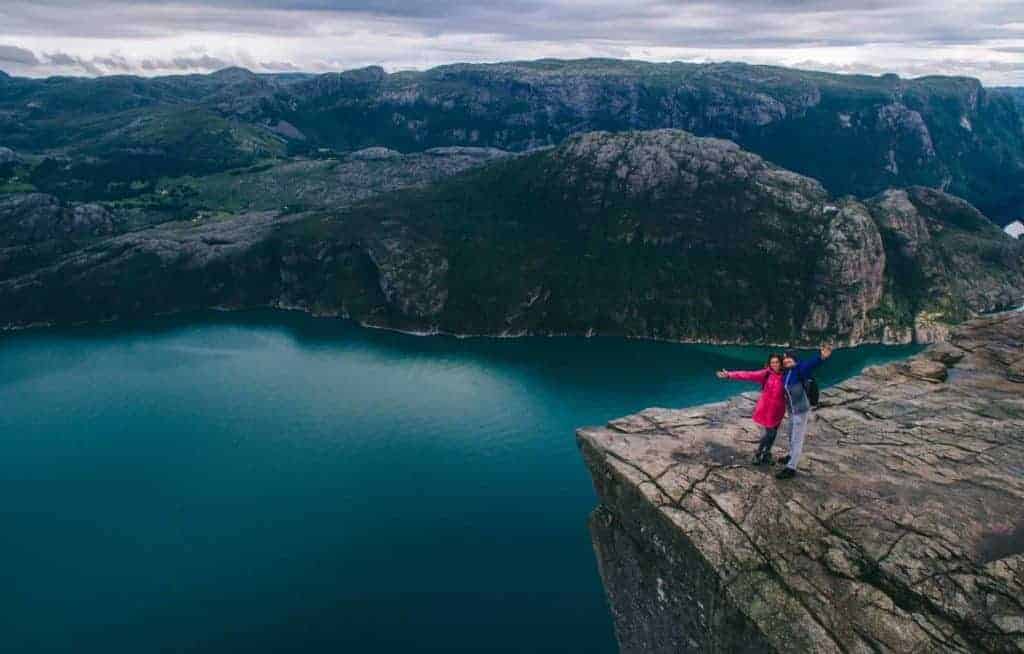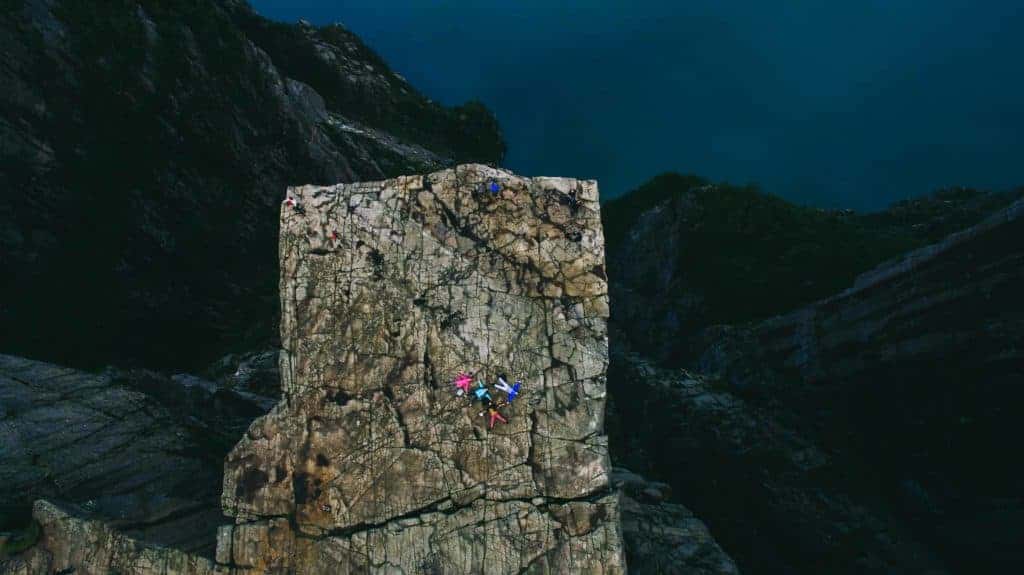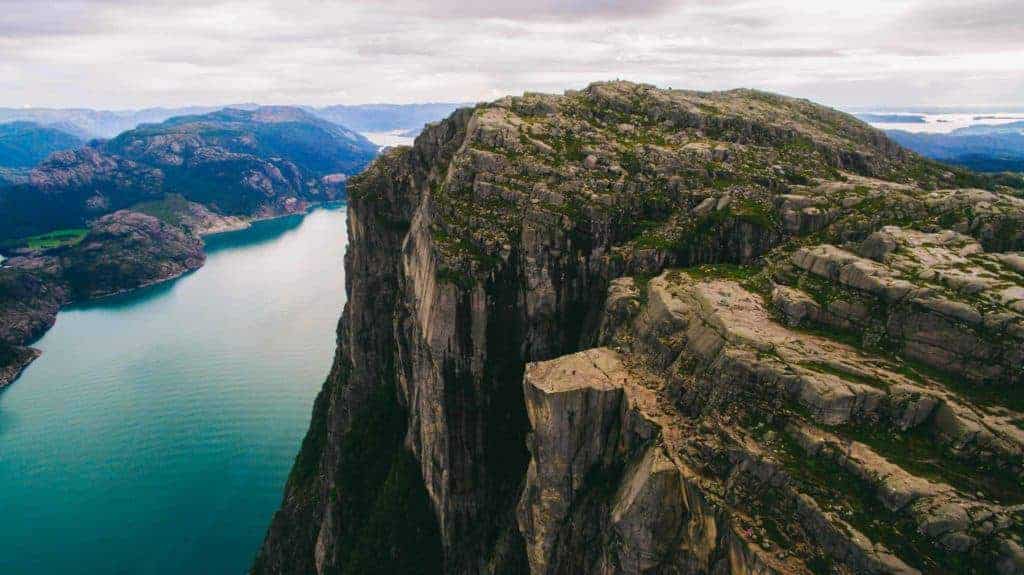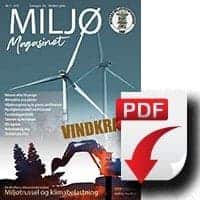The wind power plant at Gilja in Gjesdal municipality in Rogaland is one of the most glaring examples of bad wind power cases. Here, the licensing authorities have been completely on holiday and granted a license to a wind power plant which will be located in the middle of the view of one of our foremost national icons, the Pulpit.
By: Arnfinn Nilsen
The pulpit, or Pulpit Rock in English, is world famous, and every year more than 250,000 visitors come from all corners of the world. The whole area is unique, not only on a national scale but also in a world context. Wild, majestic and beautiful fjord landscape with high mountains plunging many hundreds of meters into the narrow Lysefjord. An experience we love to show off and are happy to share with all friends and visitors.

photo: Freepik
Fred Olsen Renewables clearly does not want to share this natural experience with anyone else, and has pushed for a number of years to build this controversial wind power plant. They have already destroyed the beautiful Lista landscape all the way out on the coast in Vest-Agder, and at the same time are also heavily involved with a number of new wind power projects across the country.
Gilja Wind Power Plant has a license to build a wind power plant of 135 MW, but later applied for increase this to 160 MW with much larger wind turbines.
In the meantime, Gilja Wind Power Plant has been put on hold at NVE pending an upgrade in the line network due to lack of network capacity. This limitation in the line network also affects the development of Sandnes Wind Power Plant, which is also on hold at NVE. Sandnes Wind Power Plant is the nearest neighbor to the controversial Vardafjellet Wind Power Plant which is under construction.
On 3 December 2019, the happy news came that Fred Olsen Renewable's application for an extended deadline for commissioning was rejected.

The Swedish Environmental Protection Agency has worked hard for a long time to stop this destructive wind power plant.
During our conversation with NVE director Kjetil Lund during the presentation of the National Framework for wind power, we showed him the tourist brochure with the majestic view from the Pulpit on the front, and for the occasion with a flashing light. It is photos like this that we use to market Norway as a tourist nation. And what are we doing to our country? Yes, we place giant wind turbines in the middle of the view. Evening and night they will be there with their flashing disco lights. Madness. Pure madness. This cannot be described as anything else.
Much of the Norwegian landscape has already been destroyed in this way up along our beautiful coast and inland.
Meetings and work
Gilja Vindkraftverk, along with a number of other wind power issues, were brought up in our meetings with NVE and OED. On Friday 28 June, the Environmental Protection Association had meeting with NVE director Kjetil Lund where we went through a number of problematic and criticism-worthy aspects of the licensing processes and follow-up of developments for wind power. Here, conditions surrounding several wind power developments were raised, including problematic aspects of the Gilja Wind Power Plant and the Pulpit. Already on Wednesday, in the following week, on 4 July, NVE sent out a letter to all builders where they had tightened conditions and routines.
We also brought up the same at our meeting OED by State Secretary Liv Lønnum on 11 September 2019.
We have also had several other meetings and conversations with politicians and others regarding this and other wind power matters.

For many local communities, the tourism industry is an important source of income. The fact that the Norwegian administration allows others than a few privileged wind power companies to collect income from the natural landscape becomes abundantly clear when, for example, we look at the development of Kjølberget in Finnskogen. Here, active work has been done on both sides of the border to get UNESCO status for Finnskogleden. Then NVE comes and places a wind power plant in the middle of this unique area and at the same time destroys all possibilities for such a UNESCO status for all future. Only in Norway can we manage our common values in such a poor way...
The landscape is destroyed and the money disappears...
The wind power industry is a parasitic industry. Much can be said about wind power, but we find nothing positive. It is harmful to the climate, harmful to the environment, unstable as an energy source, a health problem and much more. What does it then give back to society? Power? Yes, it is unstable. Very unstable. In fact, the wind turbines only deliver a maximum capacity of about 30% of the time. The rest of the time it must be supplemented by balancing power.
Financially, it deprives the community of large subsidy funds. The developers only care about collecting as much support as possible, draining the companies of money and running away. Most of the wind power companies are actually sold to foreign companies when they have received a license or as soon as they have started construction. Only after the 12th year of operation must the wind power company present a financial plan to NVE for how the facility is to be removed and cleaned after the end of the concession period (25 years).
Midtfjellet wind power plant in Fitjar municipality in Stord in Hordaland received in 2010 346.5 million in ENOVA support. In 2018, they had an operating profit of 29 million. From this they took out one ordinary dividend of 28 million and in addition a extraordinary dividend of 308 million. Does anyone really think there will be any money left for cleanup?
In the same way, it is also in a number of other wind power plants. TV2's excellent reportage “Wind Paradise” about the Tellenes Wind Power Plant in Rogaland shows how the company is drained through debt financing with expensive loans and is owned by unknown companies in the tax haven of the Cayman Islands.

photo: Freepik
Giljavetaket en delvis seier…
Fred Olsen Renewables got too stingy. First they had obtained a license for 135 MW, then they wanted everything more and bigger. The line network did not have as much capacity as Fred Olsen needed for his monster project. Therefore, they applied for an extension of the deadline in order not to miss out on the subsidy funds, the so-called Green Certificates.
Meanwhile, have NVE in a letter to developers, on 27 November 2019, that they no longer grant deadline extensions beyond 31 December 2021.
Now the license case with NVE is still pending due to a lack of capacity in the line network and Fred Olsen Renewables has had major problems in realizing this wind power plant. At the same time, it is important not to lower the stakes, because the final sentence has still not been set in this case.

The Frafjord heaths and the area around Preikestolen assessed by the County Governor of Rogaland to have qualities of national park value
“The Preikestol area and the Frafjordheiane have values that may indicate national park protection."
Both areas are visually affected by wind turbines from the Gilja wind power plant, both in terms of the turbines' height, location and reflective flashing, and thus have a greatly reduced quality of protection.
The county governor in Rogaland has, on behalf of the Norwegian Environment Agency, assessed areas in Rogaland with high conservation values:
Great need for new conservation areas - including two national parks
PRESERVATION AREA:
It is a national goal that a representative selection of Norwegian nature should be preserved for future generations.
On behalf of the Norwegian Environment Agency, the County Governor has mapped areas in Rogaland with high conservation values.
Published 01/02/2019
In Storting message 14, Nature for life (2015–2016), a need is expressed for a limited addition of protected areas with nature types that are currently insufficiently covered in the country. Current forms of protection are national parks, landscape protection, biotope protection and nature reserves.
A comprehensive review
In total, we have arrived at 62 larger and smaller areas in Rogaland. This does not mean that a protection process with protection limits has been initiated. We take care of great qualities of nature and experience that are currently not adequately covered within the existing conservation area.
Important natural values
There are still large national, and partly international, natural values that are not protected in Rogaland. The value for outdoor life and tourism can hardly be overestimated in many of the areas.
The Preikestol area and Frafjordheiane have values that may indicate national park protection.
Both the Frafjordheiene and the Preikestol area will have greatly reduced conservation values due to the development of the Gilja wind power plant. Although parts of Frafjordheiene and the Preikestol area are located in the neighboring municipality of Forsand, these areas are equally important for Gjesdal municipality. Destroying the conservation values of these areas before they have had their conservation status finally assessed is very unfortunate for the municipality, the region and also on a national scale. Here, the municipality is deprived of future possibilities in spatial planning and business development that can be built around a possible conservation status, and the inhabitants will have a greatly reduced experience of nature in these areas. The ripple effects in society and for local businesses are also calculated to be large.
In his letter to the Norwegian Environment Agency of 01/02/2019, the County Governor of Rogaland writes, among other things, the following:
Response to mission supplementary protection phase I
On behalf of the Norwegian Environment Agency, the county governor has assessed the need for demarcated supplementary protection according to sections 35, 36, 37 and 38 of the Natural Diversity Act. 62 larger and smaller areas and sub-areas have been identified, in accordance with the objectives and guidelines for the work. The area is spread over most of the county. National park, landscape protection, nature reserve and biotope protection are all relevant forms of protection
Leaders for the assignment
In accordance with the assignment letter, we have used the existing knowledge base. Furthermore, we have followed the instructions in the assignment letter from the Norwegian Environment Agency; including the following objectives:
- All nature types must be adequately represented in Norwegian protected areas
- The area must contribute to safeguarding threatened species and nature types
- The area must contribute to the natural values becoming more robust in relation to climate change and other negative impacts.
- Existing and new protected areas must, taken together, constitute a functional ecological network to the greatest extent possible.
—
Fjord and mountain landscape
There are only a few areas left in Rogaland that have land more than 5 km from technical interventions. Power lines, roads, cabin construction, watercourse regulation and now potential wind power development threaten the last remnants of the way to have less impact on wilderness. The wilderness areas in the mountain region are important for endangered species such as wild reindeer, mountain grouse and grouse and a number of other endangered fauna species.
At the same time, there are old cultural traces as ancient monuments and more recent cultural monuments, such as drift roads, stølar and støl landscape. This helps to raise the value of landscape protection and possibly national parks.
Lysefjorden with the surrounding Frafjord hills and Preikestolen/Jørpeland hills constitutes, together with inner fjord areas at Skaulen/Saudaheiene, landscape of national and international value. In our opinion, the area has national park qualities. The coherent natural gradients from the fjord, via lush and water-rich valley sides and boreal heath up to the alpine area, provide the basis for a wide range of nature types and species in a well-developed and decisive ecological network. These areas, in their size and smooth transitions, will be robust to climate change.
The existing Frafjordheiane landscape protection area was in St. meld. No. 52 (1991-92) New national plan for national parks highlighted as current as a new national park. The Preikestol area and the Frafjord hills with the intermediate Lysefjord make up a magnificent and coherent large-scale landscape with great conservation value. In our view, the importance and potential for national and international outdoor life and tourism is very great.
We just have to keep working to protect this unique landscape. Not only against the ravages of wind power, but against other dangers as well. In a similar way, we work all over the country for the Norwegian landscape, for natural diversity, the environment and for the many local communities that stand up and fight bravely against this evil.
To those who want to destroy this country for some quick money. We promise you noise. Much noise. Because our task is to take care of the natural values, the environment and Norwegian society. Both for us living today, and not least for future generations. We have no more nature to lose…






